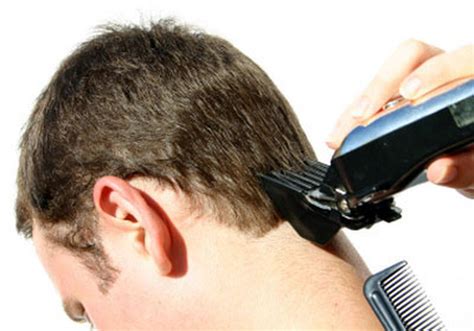Introduction
Maintaining a stylish and well-groomed coiffure is an essential aspect of a man’s overall appearance. Hair clipping offers a versatile and practical solution for achieving a wide range of hairstyles, from classic cuts to contemporary fades. This guide will provide a comprehensive overview of hair clipping techniques, tools, and best practices for men to help them master the art of self-grooming.

Benefits of Hair Clipping
There are numerous benefits associated with hair clipping for men, including:
- Convenience: Hair clipping allows you to trim your hair at home, saving time and money on salon visits.
- Versatility: Hair clippers can be used to create a variety of hairstyles, from short buzz cuts to longer, layered looks.
- Control: You have complete control over the length and style of your hair, ensuring you get the exact look you desire.
- Maintenance: Regular hair clipping helps maintain your hairstyle and prevents split ends.
Choosing the Right Hair Clippers
Selecting the right hair clippers is crucial for achieving optimal results. Consider the following factors:
- Power: Electric hair clippers are powered by motors that range in wattage. Higher wattage motors provide more power and speed, allowing for faster and more precise clipping.
- Blade Size: The size of the clipper blades will determine the length of hair that can be cut. Common blade sizes for men range from 0.5mm to 32mm.
- Attachments: Most hair clippers come with a variety of attachments that allow you to achieve different hair lengths and styles. Look for clippers with adjustable lengths, taper levers, and shaping combs.
- Ergonomics: Choose hair clippers that are comfortable to hold and operate. Consider the weight, grip, and overall design.
Hair Clipping Techniques
There are several different hair clipping techniques that can be used to create various hairstyles.
Fading
Fading involves gradually blending different hair lengths, creating a seamless transition from short to long hair. Techniques include:
- High Fade: The fade starts high on the sides and back, gradually blending into longer hair on top.
- Mid Fade: The fade starts midway up the sides and back, leaving more hair on top.
- Low Fade: The fade begins low on the sides and back, creating a subtle transition to longer hair.
Tapering
Tapering is a technique that involves trimming hair shorter around the sides and back, while leaving more length on top. This creates a more refined and professional look.
Buzz Cut
A buzz cut is a short, uniform haircut that removes most of the hair on the head. Buzz cuts can be achieved using a clipper with a short blade size, such as 0.5mm or 1mm.
Shaping
Shaping involves using hair clippers to create specific lines and shapes around the hairline, beard, or mustache. This technique requires precision and practice.
Step-by-Step Hair Clipping Guide
- Wash and Dry Your Hair: Start with clean, dry hair to ensure even clipping.
- Choose the Correct Blade and Attachment: Select the blade size and attachment that соответствует the desired hair length.
- Establish a Starting Point: Begin clipping at the desired shortest length and gradually work your way up.
- Clip in the Direction of Hair Growth: Hold the clippers parallel to the scalp and clip in the direction of hair growth to avoid pulling or tugging.
- Use Light, Even Strokes: Apply gentle pressure and make even strokes to ensure a smooth, consistent cut.
- Check and Blend: Regularly check the length and blend different sections to create a seamless transition.
- Shape and Refine: Use shaping attachments to refine the hairline, beard, or mustache, if desired.
Pain Points and Motivations
Pain Points:
- Lack of time or money for salon visits
- Difficulty achieving desired hairstyles at home
- Uneven or poorly executed haircuts
Motivations:
- Control over hair length and style
- Convenience of grooming at home
- Improved appearance and confidence
Tips and Tricks
- Use a slightly damp towel around your hairline to prevent hair from falling into your eyes.
- Hold the clippers slightly tilted to reduce dragging and irritation.
- Work slowly and carefully, especially around sensitive areas like the ears and neckline.
- Use a small mirror to check sections of hair that are difficult to see.
- Clean and oil your hair clippers regularly to maintain optimal performance.
Comparison of Pros and Cons
| Pros | Cons |
|---|---|
| Convenience and time-saving | Requires practice to achieve desired results |
| Versatility in hairstyles | Can be time-consuming for complex cuts |
| Control over hair length and style | Can be difficult to achieve precision in certain areas |
| Maintenance of hairstyles | Requires regular cleaning and maintenance |
Innovative Hair Clipping Applications
- Home Barbershop: Hair clipping can be used to set up a home barbershop, offering services to friends and family.
- Hair Art: Hair clippers can be used to create intricate designs and patterns on the head, known as hair art.
- Pet Grooming: Hair clippers can be adapted for pet grooming, providing a safe and convenient way to trim animal hair.
- Landscaping: Specialized hair clippers can be used to trim grass and hedges in landscaping applications.
Conclusion
Hair clipping for men is an essential tool for achieving a wide range of hairstyles and maintaining a well-groomed appearance. By understanding the different techniques, choosing the right tools, and following the step-by-step guide, men can confidently clip their own hair at home. With practice and patience, they can master the art of self-grooming and achieve the desired look they envision.
